

History of the Web. Sir Tim Berners-Lee invented the World Wide Web in 1989.
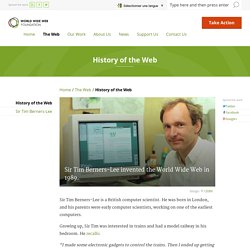
Sir Tim Berners-Lee is a British computer scientist. He was born in London, and his parents were early computer scientists, working on one of the earliest computers. Growing up, Sir Tim was interested in trains and had a model railway in his bedroom. He recalls: “I made some electronic gadgets to control the trains. After graduating from Oxford University, Berners-Lee became a software engineer at CERN, the large particle physics laboratory near Geneva, Switzerland. “In those days, there was different information on different computers, but you had to log on to different computers to get at it. Tim thought he saw a way to solve this problem – one that he could see could also have much broader applications. In March 1989, Tim laid out his vision for what would become the web in a document called “Information Management: A Proposal”.
HTML: HyperText Markup Language. In 2009, Sir Tim established the World Wide Web Foundation. 1969: Man takes first steps on the Moon. 1969: Man takes first steps on the Moon American Neil Armstrong has become the first man to walk on the Moon.
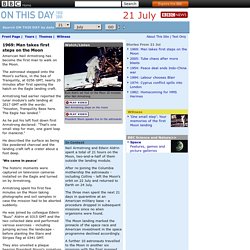
The astronaut stepped onto the Moon's surface, in the Sea of Tranquility, at 0256 GMT, nearly 20 minutes after first opening the hatch on the Eagle landing craft. Armstrong had earlier reported the lunar module's safe landing at 2017 GMT with the words: "Houston, Tranquility Base here. The Eagle has landed. " As he put his left foot down first Armstrong declared: "That's one small step for man, one giant leap for mankind.
" He described the surface as being like powdered charcoal and the landing craft left a crater about a foot deep. 'We came in peace' The History of the Light Bulb. More than 150 years ago, inventors began working on a bright idea that would have a dramatic impact on how we use energy in our homes and offices.
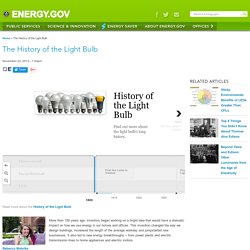
This invention changed the way we design buildings, increased the length of the average workday and jumpstarted new businesses. It also led to new energy breakthroughs -- from power plants and electric transmission lines to home appliances and electric motors. Like all great inventions, the light bulb can’t be credited to one inventor. It was a series of small improvements on the ideas of previous inventors that have led to the light bulbs we use in our homes today. Incandescent Bulbs Light the Way Long before Thomas Edison patented -- first in 1879 and then a year later in 1880 -- and began commercializing his incandescent light bulb, British inventors were demonstrating that electric light was possible with the arc lamp.
Energy Shortages Lead to Fluorescent Breakthroughs. Industrial Revolution. Iron and Coal, 1855–60, by William Bell Scott illustrates the central place of coal and iron working in the industrial revolution and the heavy engineering projects they made possible.
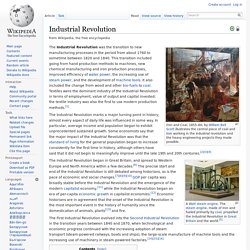
The Industrial Revolution was the transition to new manufacturing processes in the period from about 1760 to sometime between 1820 and 1840. This transition included going from hand production methods to machines, new chemical manufacturing and iron production processes, improved efficiency of water power, the increasing use of steam power, and the development of machine tools. It also included the change from wood and other bio-fuels to coal. Textiles were the dominant industry of the Industrial Revolution in terms of employment, value of output and capital invested; the textile industry was also the first to use modern production methods.[1] The Industrial Revolution marks a major turning point in history; almost every aspect of daily life was influenced in some way.
Etymology Textile manufacture Chemicals. Definition of The First Agricultural Revolution. Human Genome Project. The Human Genome Project (HGP) is an international scientific research project with the goal of determining the sequence of chemical base pairs which make up human DNA, and of identifying and mapping all of the genes of the human genome from both a physical and functional standpoint.[1] It remains the world's largest collaborative biological project.[2] The project was proposed and funded by the US government; planning started in 1984, the project got underway in 1990, and was declared complete in 2003.
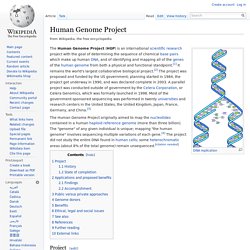
A parallel project was conducted outside of government by the Celera Corporation, or Celera Genomics, which was formally launched in 1998. Most of the government-sponsored sequencing was performed in twenty universities and research centers in the United States, the United Kingdom, Japan, France, Germany, and China.[3] The Human Genome Project originally aimed to map the nucleotides contained in a human haploid reference genome (more than three billion). Project[edit] History[edit] Dr. 1.